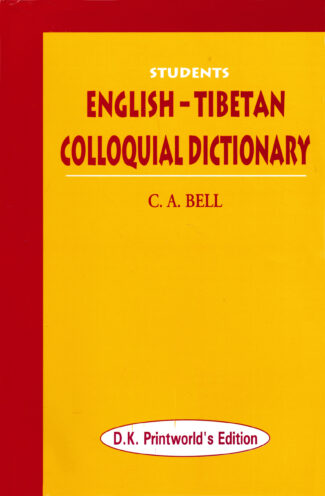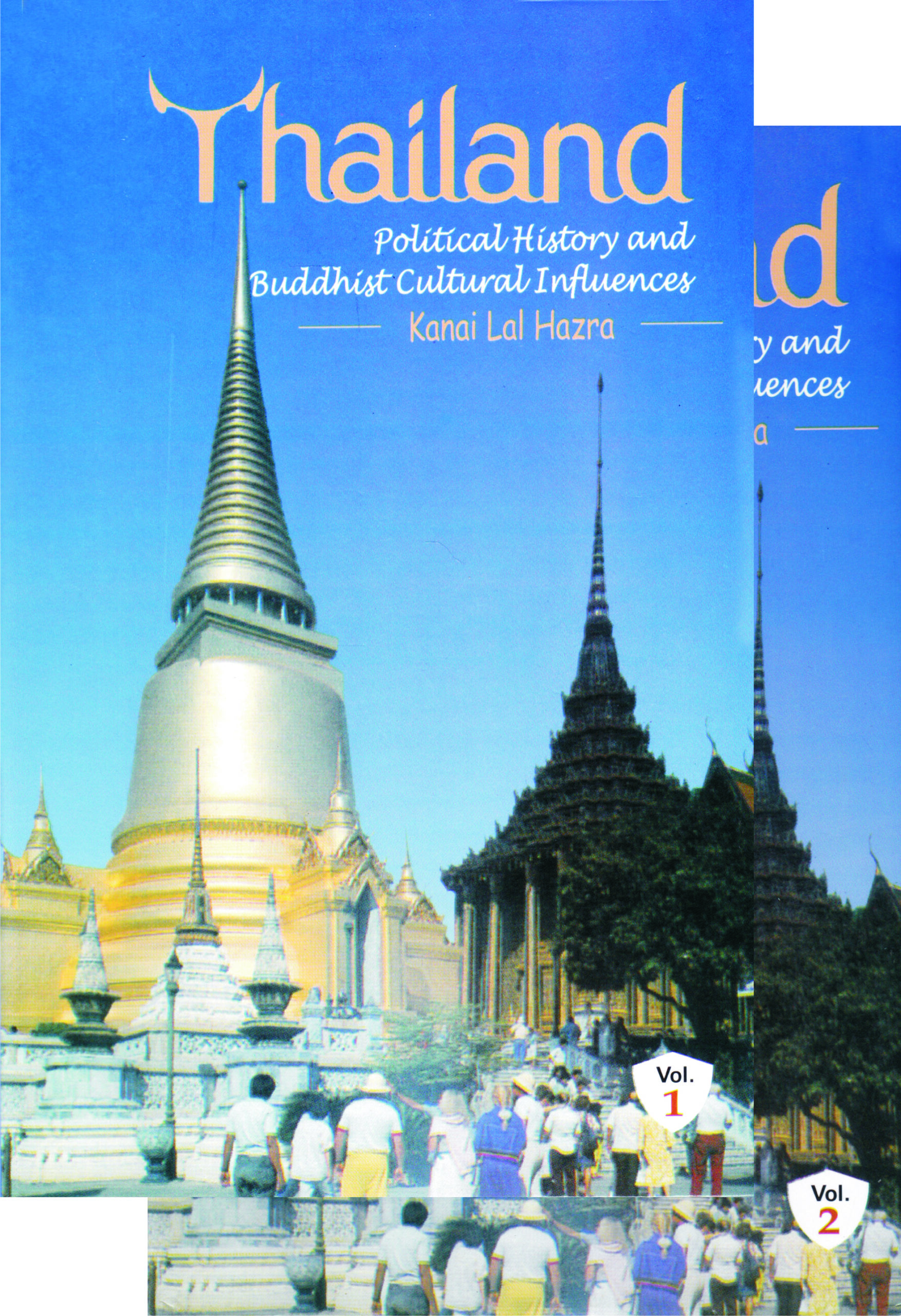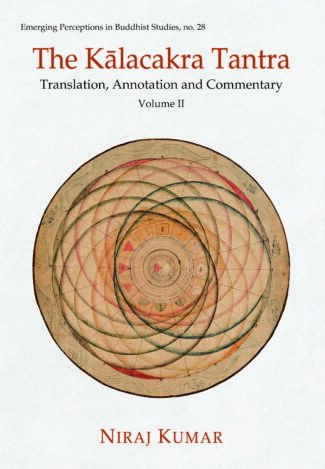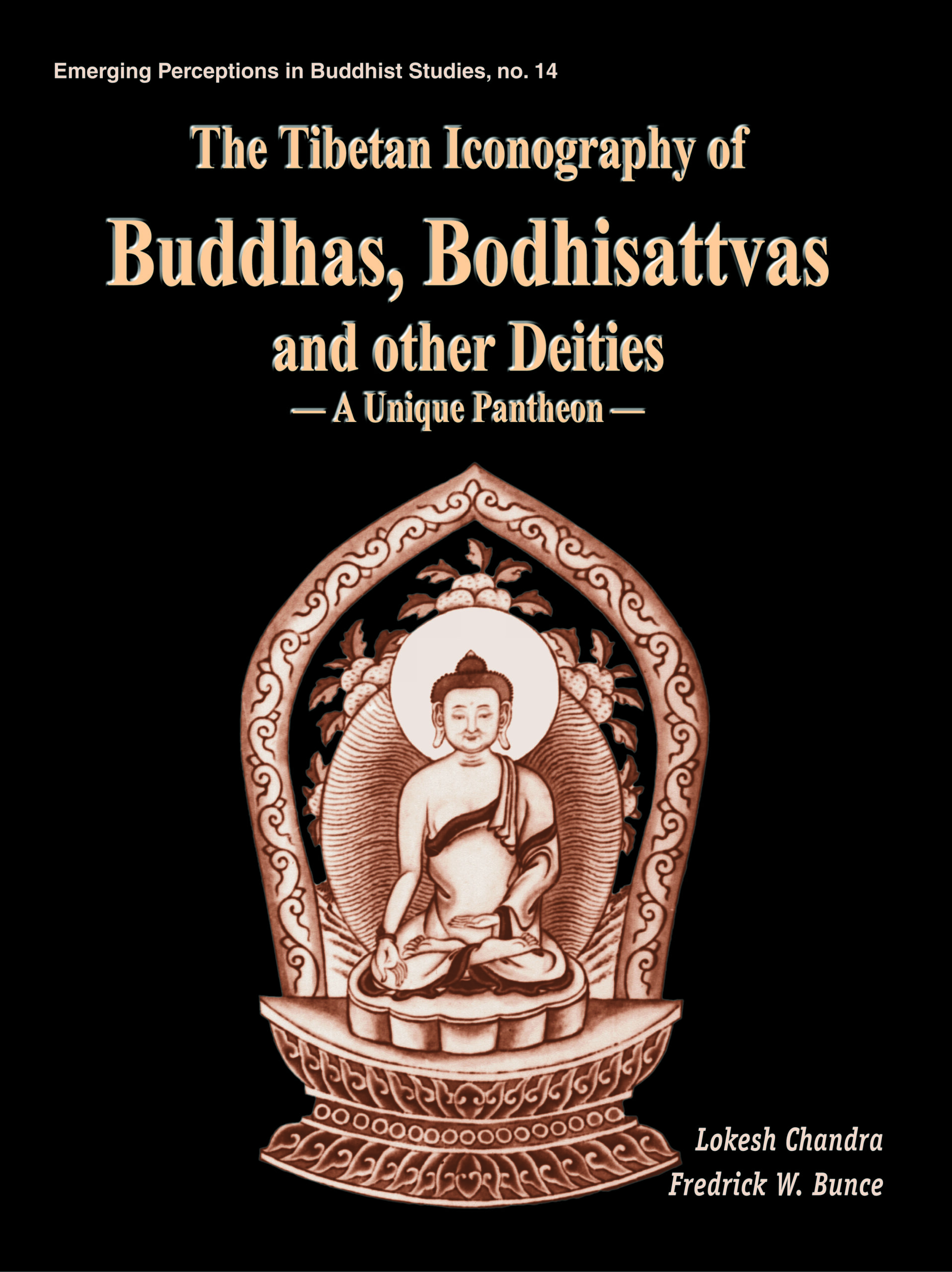Showing 49–60 of 66 results

The Dictionary containing more than eleven thousand words including honorific words, is a practical handbook that attempts to provide a quick yet thorough understanding of the colloquial Tibetan language. It presents Tibetan words in romanised form for pronunciation by those who do not understand Tibetan.
The Dictionary is a practical handbook that attempts to provide a quick yet thorough understanding of the colloquial Tibetan language. A special feature of the Dictionary containing more than eleven thousand words including honorific words, is that the Tibetan words are presented in romanised form for pronunciation by those who do not understand Tibetan. An introductory chapter details the structure and system of pronunciation of Tibetan letters and words. It combines an easy approach with incorporation of features like two or more Tibetan words against the same English equivalent and the literary form in the Tibetan character, with the colloquial form in the romanised Tibetan, when the colloquial and Tibetan forms differ from each other to some extent. All this is to aid in a deeper knowledge of the subject. A special feature of this edition is that all the corrections listed in the errata of the second edition have been carried out in the main text. The volume will be particularly useful to scholars of Tibetan language and English-speaking students learning the language.

The book makes a fascinating study of the unique philosophical tradition revolving around the concept of the Sunya Purusa the ineffable, indescribable and non-dual Reality that originated in medieval Orissa. Examining a range of philosophies, it throws light on the theories of this rare school of Vaisnavism that was Vaisnavite in form but Buddhistic in essence.
This pioneering study of the indigenous philosophical tradition of Orissa which evolved between the 15th 16th century ce brings into limelight the wonderful syncretism of Buddhism and Vaishnavism, traditions that are generally considered philosophically antithetical. A deep metaphysical quest underlies the enquiries and analyses of this assimilative tradition and is epitomized in the works of the philosopher-poets of Orissa in the concept of the Shunya Purusha the ineffable, indescribable and non-dual reality. This is a unique concept that encompasses within its fold the idea of Jagannatha (the Vaishnavite deity of Puri) as Shunya. The author explores the whole range of Indian philosophical heritage including Vaishnavism, Buddhism, Advaita Vedanta, Yoga, and Natha tradition to bring out the highpoints of this rare philosophical tradition. She, very competently, throws light on the philosophical theories/concepts of Bauddha Vaishnavism Vaishnavic in form but Buddhist in spirit. The book is a valuable guide on this distinctive Orissan Vaishnava tradition to all students and scholars of Indian religion and philosophy.

The book comprehensively studies aspects of Thai political life, religion, art and literature emphasising the role of Buddhism in influencing the Thai culture. It analyses Buddhist art styles pertaining to sculpture, stucco decoration and paintings in different periods of history and surveys schools of art and stupa-building.
The book is a comprehensive study of different aspects of Thai political life, religion, art and literature with the emphasis on the role of Buddhism in influencing the Thai culture and way of life. Showing how Thailand has a unique blend of a glorious past traceable to very early times and remarkable modernisation attempts, it traces, under political history, the earliest dynasties of kings and their battles and wars to found empires and cities down to more recent political developments in particular, its loss of territories to the British and the French in the nineteenth-twentieth centuries, its relation with other nations and its economic scenario. Reflecting deep scholarship and quoting extensively from ancient and modern scholarly works it looks into the rise and development of Buddhism referring constantly to inscriptional evidences and archaeological studies. Focussing on a detailed analysis of the growth of Buddhist art styles pertaining to sculpture, stucco decoration and paintings in different periods of history, it takes up a survey of the schools of art and stupa-building while revealing how the Thai art form is based on ideas borrowed from India, Sri Lanka and Cambodia. In an interesting attempt, the author undertakes a discussion of the Thai tamnan (stories/legends) of the distant past: historical works by Buddhist monks and accounts relating to Buddhist images, relics and institutions.

The Gospel of Buddha sketches the picture of a religious leader of the remote past with a view of make it bear upon the living present and become a factor in the formation of the future. It essentially talks about all major developments in the life of the Buddha and helps all true Buddhists understand the real tenets of Buddhism to stand firm on ground.
The Gospel of Buddha characterizes the spirit of Buddhism correctly and concisely. It draws parallelisms in Western thoughts, especially those which reflect in the Christian Gospels. Buddhism like Christianity has a number of sects and this book, however, does not side with any sectarian tenets, but takes an ideal position upon which all true Buddhists may stand up as on firm ground. It helps people to comprehend Buddhism better in an easy way and it sets the reader thinking on the problems and challenges of religions today.
It sketches the picture of a religious leader of the remote past with a view of make it bear upon the living present and become a factor in the formation of the future. It essentially talks about all major developments in the life of the Buddha – his transformation from Prince SiddhÀrtha to the Buddha, to his founding of the Kingdom of Righteousness, to the consolidation of his religion, to his teachings, and to the parables and stories that he used, to his last days.
This book is expected to serve both the Buddhists and Christians to penetrate deep into the spirit of their faith so as to see its full length, breadth and length.

The Gospel of Buddha sketches the picture of a religious leader of the remote past with a view of make it bear upon the living present and become a factor in the formation of the future. It essentially talks about all major developments in the life of the Buddha and helps all true Buddhists understand the real tenets of Buddhism to stand firm on ground.
The Gospel of Buddha characterizes the spirit of Buddhism correctly and concisely. It draws parallelisms in Western thoughts, especially those which reflect in the Christian Gospels. Buddhism like Christianity has a number of sects and this book, however, does not side with any sectarian tenets, but takes an ideal position upon which all true Buddhists may stand up as on firm ground. It helps people to comprehend Buddhism better in an easy way and it sets the reader thinking on the problems and challenges of religions today.
It sketches the picture of a religious leader of the remote past with a view of make it bear upon the living present and become a factor in the formation of the future. It essentially talks about all major developments in the life of the Buddha – his transformation from Prince SiddhÀrtha to the Buddha, to his founding of the Kingdom of Righteousness, to the consolidation of his religion, to his teachings, and to the parables and stories that he used, to his last days.
This book is expected to serve both the Buddhists and Christians to penetrate deep into the spirit of their faith so as to see its full length, breadth and length.
The Kalacakra Tantra was the last major Tantrik text written in India before the decline of Buddhism. The book has left indelible influence over different regions of Asia in last thousand years of its journey. Apart from the Vimalprabha commentary composed during the mid-11th century, there is no verse by verse commentary available to the general reader. Kumar has attempted translation of the full text from Sanskrit original and has also contributed a new detailed commentary. This book locates mysterious Sambhala and Oddiyana. The book further delves into the chronology of legendary Kalki kings.

Proposed in five volumes, this volume of Kālacakra Tantra is the second in series. While the first volume attempts to locate mysterious Śambhala and Oḍḍiyāna while delving into the chronology of legendary Kalkī kings, the second volume deals with the structure of inner Kālacakra. It explores the internal mechanisms of winds, subtle veins and cakras. Haṭha-yoga and tenets of Islamic philosophy are also covered in the second volume.
“The Kālacakra Tantra was the last major Tāntric text composed before the decline of Buddhism in India. Over the course of its thousand-year journey, the book has left an indelible influence over different regions of Asia. Apart from the Vimalaprabhā commentary composed during the mid-eleventh century, no verse-by-verse commentary is available to the general reader. Kumar has translated the entire 1,047 stanzas of the text written in Sragdharā metre. In addition, he has produced distinct volumes of fresh, in-depth commentary for each of the five chapters of the original Sanskrit text. The first volume was published in 2022.
This second volume delves into the understanding of the inner Kālacakra. The internal mechanisms of winds, subtle veins and cakras have been explored with clarity. In Indic tradition, haṭha-yoga has been propounded for the first time in this section of the Kālacakra Tantra. Likewise, it contains the first Indian critique of the tenets of Islamic philosophy. This volume also examines several methods to calibrate the biomechanics of prāṇa-vāyu to defer the impending death.”

The monograph consists of two parts, the first examines Buddhist devo-tional practices, in Theravada tradition and their objective and benefits. Part two elucidates the rise and growth of Buddhist devotionalism in Ceylon, Burma and Thailand, keeping view in the specific demonstrative aspects of their faith in contemporary Buddhist religious life.
The monograph consists of two parts, of which the first examines the Buddhist devotional practices, from the historical and canonical perspectives of the evolution of the worship of caitya, stupa, relics, symbols and images. It provides a multi-dimensional account of caitya, thupa, relic, symbol and image worship in Theravada Buddhist tradition, in the Sinhalese Vamsa literature and as depicted in the records of the prominent Chinese travellers to India. It throws light on the Buddhist stupa, the Buddhas relics viz, hair, nail, tooth and ashes; the symbols which pre-ceded the Buddha image viz., the bodhi-tree, wheel, bowl, staff, robe, crest, turban, shadow and the Buddhas foot-prints as the objects of devotion and worship and the objectives and benefits of such devotional acts. Part two elucidates the rise and growth of Buddhist devotionalism in Sri Lanka with special reference to its ceremonies, rituals, pilgrimages as depicted in the devotional literature of Ceylon. Further, it provides an account of devotional Buddhism in Burma by tracing its antiquity; describes Buddhas relics, images and pagodas as the objects of veneration. Similarly, it makes a brief survey of Thai Buddhist devotionalism with special reference to Wats, Thai offerings and prayers to Buddha images and their objectives. The work illuminates the historical and canonical significance of precept and practice of different aspects of Buddhist devotion and how they are demonstrated in the contemporary Buddhist religious life of Ceylon, Burma and Thailand.

The book studies the 360 icons of the Chu Fo Pu-sa Sheng Hsiang Tsan pantheon referring to a rare set of woodcuts distinct among Buddhist pantheons. It analyses the unique features of this pantheon, pointing out the significance of each figure in the mythological/theological framework and minutely describing the iconography of the images.
Beginning with a few aniconic symbols, like footprints, the Bo tree or stupas, in the pre-christian Indian art, Buddhism, over the centuries, came to evolve a be-wildering array of deities in ever-increasing number of pantheons. Interestingly, in Buddhism today, there are perhaps as many pantheons as there are countries, or internal regions or sects within them. Chou Fo Pu-sa sheng Hsiang Tsan, in focus here, is one of these many Buddhist pantheons and acknowledgedly the culmination of Lamaist art. Authored by Rol. pahi.rdo.rje, alias Lalitavajra, (1717-1786): an imperial preceptor of Emperor Chien-lung (1736-1795), it is a rare set of 360 wood-cuts/xylographs, representing varying forms and manifestations of the Buddhas, Bodhisattvas, tantric and tutelary deities, arhats, sages, teachers, dharmapalas and protective divinities. It is also accompanied by 360 `eulogies’ in Chinese. Two internationally distinguished scholars here team up to present afresh the Chou Fo pu-sa Sheng Hsiang Tsan, aptly called a unique pantheon. Drawing together all the 360 wood-cut images in their vividly enlarged/enhanced versions without compromising their aesthetic integrity, the book not only captures their subtle iconic devices, but spells out as well, in meticulous detail, all their iconic attributes, like body postures, faces, arms/hands, mudras, asanas, vahanas, companions, and whether clam or wrathful. The book also incorporates the names of each deity/deity-form in Sanskrit, Manchu, Mongolian, Tibetan, and Chinese. Unveiling, for the first time, the images of a veritably unique pantheon, in their enlarged format, and their accompanying Chinese eulogies, the book is bound to fascinate anyone concerned with Buddhist art and iconography.

The volume studies comprehensively the theory and practice of Tibetan Buddhism: its historical, religious and cultural evolution, its various deities and their symbolism, its basic philosophy and sadhana and the intricacies of the religious experience it involves. It has numerous illustrations and references to original works.
Tibetan Buddhism has held a place of its own in the Buddhist tradition, having preserved and evolved the religious culture of the Vajrayana, the final phase of Buddhism in India. Within that, the Tibetan Tantric belief has a unique significance and it has made a memorable contribution to the literature on Tibetan Buddhism. This authoritative work deals with the theory and practice of Tibetan Buddhism in a comprehensive manner. It presents a study of Tibetan Tantricism beginning with an account of the historical, religious and cultural evolution of Tibetan Buddhism and delving into the intricacies of practice of the religion. Dr. Krishna Ghosh discusses the many deities of the tradition as representing a wide range of religious experience from the primitive to the sublime. She lays bare the complex vision of Tibetan Tantric Buddhist philosophy and sadhana, clearing it of the obscurantism associated with the belief system for long. The work abounds in illustrations line drawings and photographs and has numerous references to original works by Tibetan and other scholars. The book is written in an easy-accessible style to allow a broad range of readers to familiarise themselves with Tibetan Tantric Buddhism. Its penetrating insights into the subject would make it an invaluable work for scholars and practitioners of the tradition.

The three scholarly volumes contain an iconographic analysis and compilation of the over 760 images from the six chapels of the Pao-hsiang Lou in the Forbidden City, Beijing. There are details of each image like name in Sanskrit, Tibetan and Chinese; physical description; iconographical and stylistic features; and associated images.
The three volumes contain an iconographic analysis and compilation of the over 760 images from the six chapels of the Pao-hsiang Lou (Bao-xiang Lou) in the garden of the Tzu-ning Kung (Palace of Kindness and Tranquillity) in the Forbidden City, Beijing. The pavilion Pao-hsiang Lou, a two-storied simple structure with seven chapels on each floor, holds hundreds of Tibetan Buddhist images of remarkable quality. The volumes present the entire set of images, each reproduced and explained with great clarity. There are details of each image with regard to the physical description of the figure portrayed and its various iconographical and stylistic features and associated images. Each entry contains the name of the deity with the Sanskrit, Tibetan and Chinese transliterations of the name. The very interesting and useful introduction discusses deities of mandalas, placement of deities within a single chapel, images of the Pao-hsiang Lou pantheon compared to the Chu Fo Pu-sa Sheng Hsiang Tsan pantheon, variations in depiction of images with regard to their hair, crown and other parts and associated ornaments, and the asanas of the images. The scholarly volumes are a result of the painstaking research by the author by referring to noted experts on the subject. The volumes will interest all students and scholars of Buddhist art and iconography.

This volume examines how the perceptible form of Buddhist mandalas represents shunya (void), with special reference to the mandalas of Tabo and Alchi. On the basis of the concept of vak (subtle sound) in Trika Shaivism of Kashmir, it investigates where their aesthetic power derives from.
The research undertaken here about Buddhist mandalas is basically designed under the philosophical question how the visible dimensions of forms are related to their invisible contents. The textual sources in reference to Buddhist mandalas teach that the essence of mandalas is shunya (void) and their forms are the reflective images (pratibimba) of shunya. This volume investigates how the colourful form of Buddhist mandalas represents the prime concept of shunya, and what makes these mandalas visually powerful, leaving the impression of ßspiritual enhancementû in the heart of people who do not even know about the Buddhist doctrines.
The mandalas permanently represented in the monastic complexes of Tabo and Alchi in the Western Himalayas have been focused in order to examine a prominent role of visual dimensions of mandalas. In order to comprehend mandalas in the context of Buddhist philosophy, the texts of the Yoga-Tantra class have been looked up. Especially, the references to the tantric visualization-practice throw light on the internal experiences with mandalas.
Considering the fact that the Buddhist mandalas have been developed as a method of Mantrayana, being always combined with mantras and mudras, this volume presents the concept of vak (word, subtle sound, voice) as a key to explain how the ultimate state of shunya and perceptible forms of mandalas are related to each other. The doctrine of vak developed in the tradition of Trika Shaivism in Kashmir provides us with a systematic way to explain the non-dualism between all phenomenal objects and the Supreme Divine. The doctrine of four levels of vak is examined in the book for the purpose of interpreting the aesthetic phenomena and structuring the different levels of meanings of mandalas from the aesthetic perspective. On the basis of the vak theory, the external forms of mandalas have been explored and their visual principles have been technically analysed, in attempt to answer the question: how do the colourful forms of Buddhist mandalas resemble the formless shunya?
| × |
|
Archaeology in the Third World 1 x ₹990.00 |
| × |
|
Journal of Gender and Justice 1 x ₹270.00 |